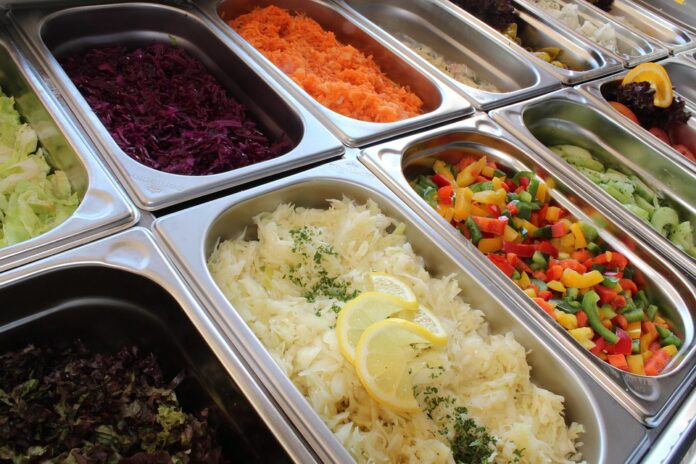Introduction
Salad bars have become increasingly popular worldwide as consumers seek healthier dining options. In this report, we will analyze the top salad bar chains globally, their strategies, and market share insights. By examining their financial performance, expansion plans, and customer offerings, we aim to provide a comprehensive overview of the salad bar industry.
Market Overview
The global salad bar market has experienced significant growth in recent years, driven by increasing health consciousness among consumers. According to Market Research Future, the market is expected to reach a value of $7.3 billion by 2024, with a CAGR of 6.2% from 2019 to 2024. This growth is fueled by the rising demand for fresh and organic ingredients, as well as the convenience of customizable salad options.
Top Salad Bar Chains
1. Sweetgreen – Sweetgreen is a leading salad chain known for its focus on locally sourced, seasonal ingredients. With over 100 locations in the United States, Sweetgreen has established a loyal customer base and a strong brand presence. The company’s commitment to sustainability and transparency has resonated with consumers, driving its success in the competitive salad bar market.
2. Chopt Creative Salad Co. – Chopt Creative Salad Co. is another popular salad chain that offers a wide variety of customizable salad options. With locations across the United States, Chopt has expanded rapidly in recent years, capitalizing on the growing demand for healthy and fresh meal choices. The company’s emphasis on flavor and creativity sets it apart from competitors in the market.
3. Just Salad – Just Salad is a fast-casual salad chain that focuses on sustainability and affordability. The company offers a diverse menu of salads, wraps, and bowls, catering to a wide range of dietary preferences. Just Salad has a strong presence in major cities like New York and Chicago, attracting health-conscious consumers with its fresh and nutritious offerings.
Strategies
Menu Innovation
One of the key strategies employed by top salad bar chains is menu innovation. By introducing new ingredients, flavors, and combinations, these chains keep customers engaged and interested in their offerings. For example, Sweetgreen regularly updates its menu to reflect seasonal produce and culinary trends, appealing to health-conscious consumers looking for fresh and creative salad options.
Technology Integration
Another important strategy in the salad bar industry is the integration of technology to enhance the customer experience. Many salad chains offer online ordering, mobile apps, and loyalty programs to streamline the ordering process and reward loyal customers. By leveraging technology, these chains can attract tech-savvy consumers and differentiate themselves in a competitive market.
Sustainability Initiatives
Sustainability is a key focus for many top salad bar chains, as consumers increasingly value environmentally friendly practices. Companies like Chopt and Just Salad prioritize sustainability by using compostable packaging, reducing food waste, and sourcing ingredients from local farmers. By emphasizing their commitment to sustainability, these chains appeal to eco-conscious consumers and build a positive brand image.
Market Share Insights
According to industry reports, Sweetgreen currently holds the largest market share among salad bar chains, followed closely by Chopt Creative Salad Co. and Just Salad. Sweetgreen’s strong brand reputation and focus on quality ingredients have helped it capture a significant portion of the market. Chopt’s rapid expansion and innovative menu offerings have also contributed to its market share growth, while Just Salad’s affordability and sustainability initiatives have attracted a loyal customer base.
Overall, the salad bar industry is highly competitive, with new players entering the market and existing chains vying for market share. By implementing strategic initiatives like menu innovation, technology integration, and sustainability efforts, top salad bar chains can differentiate themselves and maintain their competitive edge in the evolving food landscape.




